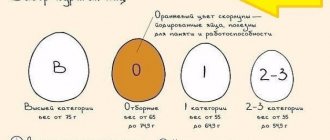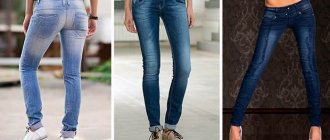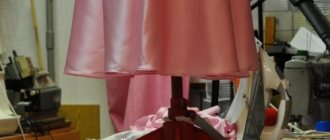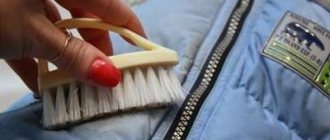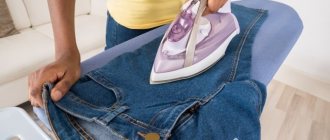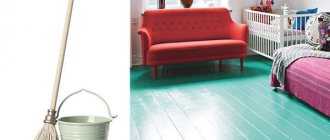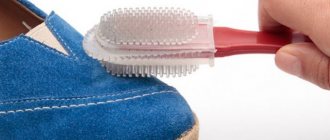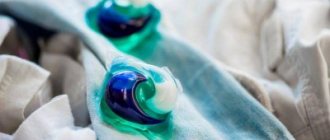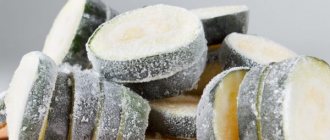Individual product - this is original, moreover, it will store your energy, correspond to the desired parameters and characteristics, color and size. We'll tell you how to make a yoga mat with your own hands so that it is perfect and sets you up for meditation.
How to sew a yoga mat?
Making the product yourself is quite simple.
On the selected material, we mark the dimensions we need before cutting it out. By the way! The size of the gymnastic mat should be 20-30 cm longer than your height, and 20-25 cm wider than your shoulders.
If you choose natural fabric, it is recommended to leave a few centimeters of reserve, since shrinkage is possible after washing. After the workpiece is cut, it is necessary to overcast the edges so that the product does not unravel and looks neat. That's it, your exclusive rug is ready!
Mat bag
In order to calculate the dimensions of the bag, you need to twist the rug and measure its height, add 4-6 cm to this value, then our product will fit freely into the case. Next we measure the circumference of the base, to the size of which we add 4-5cm.
We mark the required dimensions of the blanks on the fabric, cut out two rectangles and two circles. We sew rectangular bases together, to the wrong side of which we sew circles on both sides. For convenience, you can make a strap; for this, a strap equal to the width of the base + 10 cm is sewn between the walls and the base, on each side.
Cutting and sewing lessons
The question “how to make a yoga mat with your own hands” does not seem so difficult if you have basic sewing skills. The width of the product should be 15-20 cm greater than the width of the shoulders, and the length should be 20 cm greater than the height of the practitioner. For a yogi with a shoulder width of 60 cm and a height of 180 cm, a yoga mat measuring 80x200 cm is suitable. After washing, many natural fabrics “shrink,” so allow a margin of a few centimeters on each side. Before cutting, draw a rectangle with calculated dimensions with chalk. The edges of the workpiece must be overcast, otherwise after a couple of yoga classes they will fray.
How to sew a yoga bolster with your own hands
Hello, friends.
Usually, I do yoga at home or visit a special club that has all the equipment necessary for practice. Mom also joined yoga practices, but more often she practices at home.
Anyone familiar with yoga knows that sometimes additional accessories are needed: bolster, belt, bolsters, bricks, etc., in order to perform the desired asana accurately and comfortably.
So my mom asked me to sew a bolster for yoga classes.
After looking at the information on websites, finding out the sizes and types of shapes, I decided to sew a round bolster that resembles a roller.
By the way, you can use the same principle to make cushions for a sofa.
Cutting out a yoga bolster
I use the following dimensions for cutting: 60 cm x 22 cm.
where 60 cm is the width of the bolster, 22 cm is the diameter of the circle;
First, I prepare the fabric for cutting.
I use two types of material:
- one, for the inner roller - ordinary cotton fabric;
- the second, for the cover - fabric on synthetic padding. Pink colour.
Mom has a pink yoga mat to match.
From cotton fabric I cut out:
- rectangle 60 cm long, 76 cm wide - according to the diameter of the circle (the side parts of the bolster) + seam allowances - 1 piece;
- side parts with a diameter of 22 cm. – 2 parts.
From fabric on synthetic padding:
- rectangle 60 cm long, 77 cm wide – 1 piece;
- side parts with a diameter of 22 cm - 2 parts;
- rectangle for handles 24 cm long, 20 cm wide – 1 piece.
I need two bolsters, so I double the number of parts.
Inner roller:
1. I stitch the rectangle along the short side, leaving an open area for turning and filling with synthetic fiber.
2. I chop, or you can sweep, the base and side parts along the cuts, checking the size matches.
3. I sew the cut circle into the resulting circle.
3. I turn it inside out, fill it with synthetic fiber and sew up the open area with a blind stitch.
The inner roller is ready.
Sewing a cover for a bolster
1. First I prepare the handles:
- I fold the piece in half with the wrong side inward;
- I fold the seam allowances;
- I put it to the edge.
Then I place the prepared part on the circle part and pin it (you can stitch it).
2. I repeat points 1 and 2 of sewing the inner roller.
3. I press the seam to make it easier to sew in the zipper.
4. I sew the zipper into the open area using a special zipper foot.
5. I put the cover on the inner cushion. Ready.
It is customary to fill a yoga bolster with buckwheat husks. If desired, you can find it in health food stores or pharmacies.
Our bolster turned out to be convenient: lightweight, the cover with a zipper can be quickly removed and washed.
Mom was pleased. Now it is much easier for her to do the exercises. It’s so nice to bring each other joy, without making each other sad. Do you agree?
Elena Krasovskaya: https://shjem-krasivo.ru/
Instructions for sewing a developmental mat
Decide on the size of the rug. It will depend on the available space (not every mother will be able to allocate an area of 2x2 m in an ordinary apartment) and content. Basically, the sizes of developmental mats vary from 1x1 m to 1.5x1.5 m. Draw a sketch of the rug. It’s better to immediately think about the color scheme and complementary details. Maybe your developmental mat will be divided into developmental zones or will be a transforming mat. Calculate how much fabric you will need for the main fabric and additional parts (sewn on, attached with Velcro, buttons, snaps, etc.). The underside of the rug can be made of smooth, non-staining fabric or even oilcloth. In the latter case, it will be easy to wipe with a damp sponge. The main part of the rug should be made of natural, safe, bright fabrics of different textures. It can be flannel, velvet, fleece, silk fabrics
It is important that the fabrics do not fade, otherwise your rug will look pale after the first wash)) Select the accessories. All accessories for a developmental mat must meet safety requirements
It is better to take beads unpainted; they should not be fragile, because a child can try them “by tooth.” Look for plastic tractor zippers, not metal ones. Choose larger pull tabs on the zippers (it will be easier for small fingers to remove them). It is possible that you will have to purchase some additional details: rattles, a mirror separately. All finished appliqués (even those with adhesive) will need to be sewn on. Rug filler. You can use padding polyester as a filler for a rug, but then you will have to quilt it with the main fabric (when washed, non-quilted padding polyester tends to bunch up). It’s easier to choose thin foam rubber for the filler. It will keep its shape better. Cut out the fabric. Baste and stitch the main pieces of the top of the rug. Sew all the additional details into the right places. Sew securely, kids manage to tear off even what an adult can’t do, so don’t skimp on threads. Assemble the top and bottom parts of the development mat and place the padding polyester (foam rubber) inside. Sew up the edge. Your mat is ready.
Addition:
If you can later hang the rug on the wall or want to attach it to the crib frame, then at the assembly stage, think about and sew loops to one side of the rug. If you want to make soft arcs on the rug for hanging toys, then you can use either halves of a children's plastic hoop or pipe insulation made of Porylex (a material similar to foam rubber in the form of a hose).
Making a choice
How to choose the right rug? First, I would like to warn you: do not confuse travel mats, the so-called karemats, and fitness mats. The first ones are made of special foam, the sole purpose of which is to protect the owner from the cold. Therefore, they slide strongly on the floor and in most cases do not repel moisture. In terms of working out in the gym, this is dangerous and unhygienic.
Wear resistance
As for fitness mats, they do not have any strict specialization. It doesn’t matter what you are going to do, aerobics, yoga, stretching, you can buy one mat for all activities. The only thing is that experts recommend starting from the expected intensity of classes. Their product line is designed for different wear resistance. For example, to pump up your abs, it is recommended to take a Reebok ab mats fitness mat. Folding multi-segment workout mats are suitable for gymnastic exercises. For yoga, Pilates, and stretching, mind body models are recommended, which are characterized by increased elasticity.
Color
You also need to consider the color of the rug. Think carefully, your choice of color is a sudden decision when you rush to something bright and attractive, or is it really your favorite tone. After all, you have a lot to do with it, which means the shade should please the eye.
Size
Such sports equipment has several standard sizes:
- width 80, 60 cm;
- length 220, 200, 180, 175 cm;
- thickness 1.5-3 mm.
It is not recommended to choose a mat that is too wide, as it is difficult to carry. The size is selected based on your height. The ideal length is your height plus 10 cm. The thickness depends on the characteristics of the activity. The thicker it is, the softer it is and the better it retains heat.
Material
Perhaps one of the most important parameters of the cost of this equipment is the material from which it is made. The level of quality and, accordingly, the price of the product depend on it. The choice of this parameter is wide.
PVC, synthetic
The most inexpensive material from which the cheapest rugs are made. If you are not confident in yourself, there is a suspicion that after a couple of classes your enthusiasm will fade away, take a bedding made of this material. It wouldn’t be a shame to use it on the farm or throw it away altogether.
In principle, it itself is short-lived. After just two years of training it will have to be replaced. Another drawback is that the material acquires an unpleasant odor over time. It is considered too slippery for yoga, with the exception of hard PVC models.
Thermoplastic elastomer
Products made from it last up to 5 years, they are pleasant to touch, they retain their shape, do not slip, and do not fade. Chlorine is not used in the production of this material, so products made from it are hypoallergenic. Suitable for Pilates, yoga, stretching.
Natural texture
The most expensive segment of the product, but also the most durable - they will serve you for years. They are made from polyurethane foam, polyurethane, latex with the addition of other natural materials. Plus, they have many other nice benefits.
For example, if rubber or jute was used in its manufacture, it will retain heat, hold securely on the surface, will not become electrified, absorb sweat, or emit unpleasant odors.
In general, you need to choose a mat based on the type of activity and its duration. This determines which models to give preference to: more expensive or cheaper ones.
Material - whatever is at hand
What is needed to make a rug? Yes, anything! Open the closet and examine things with a critical eye. The list of materials that can be used is very large:
- old knitted items - T-shirts, sweatshirts, jumpers;
- thick fabric from jeans, coats, jackets;
- remnants of knitting threads, rope or cord.
Beautiful rug made of pompoms
Homemade floor mats
DIY educational mat
When choosing a technology, take into account the characteristics of carpets made of different materials. Patchwork and fleecy ones are suitable for the bedroom, they are pleasant to walk on barefoot, but they do not last long. Knitted and woven carpets are stronger, but tougher; they are best laid in the hallway and kitchen. Bathroom rugs should absorb water well, dry quickly and not fade.
Quick Drying Bath Mat
Rugs for the front door need to be washed and cleaned frequently; it is better to use waterproof materials for them.
Entrance door mat
Also consider the style of the new item and its compatibility with your interior. Motley multi-colored carpets will fit perfectly into the design of a children's room, wicker and woven rugs will decorate a kitchen or country house.
Homespun rugs in the country house
A strict openwork carpet or a product with a classic ornament will take pride of place in the living room, giving it charm and comfort.
Knitted carpet for the living room
We use additional surfaces
Additional surfaces can perform different functions - for beginners they can serve as a position stabilizer, for those who have been practicing for a long time - they can provide additional load. For example, an ordinary door will serve as the necessary support for anyone who feels unsteady when performing squats and lunges; all they need to do is hold firmly on the door handle and “move” the door along with you during the exercise. At the same time, the doorway will be an excellent place for push-ups. To do this, you need to place your hands on the sides of the doorway and move away to such a distance that your body forms a straight, inclined line. Marina Starostina also recommends using books for push-ups. By stacking several books, you can do reverse push-ups, which work your biceps.
Braided rope rug
A very practical and durable rug can be made from thick rope - nylon, jute or cotton. For a rug measuring 0.85 x 0.6 m you will need about 60 m of rope with a thickness of 1.2 mm.
Nautical style braided rug
For convenience, it is better to weave on a flat surface on which the dimensions of the rug are indicated - this makes it easier to maintain its proportions. The ends of the nylon rope must first be burned to prevent it from unraveling. The ends of jute or cotton rope can be secured by wrapping them with strong thread.
The weaving pattern is shown in the figure. First, weave the first row of the pattern, then repeat it several more times until the mat is completely filled.
Sea rug weaving pattern
Video - DIY jute rug
https://youtube.com/watch?v=cdI3BRVYkE8
A homemade rug is not just a new life for old things. Small details made by yourself give the home a unique flavor, create a positive attitude and an atmosphere of comfort.
Proper care is the key to long service life
To start using such a product, just unwrap it and you can begin your spiritual development. After training, you need to take your time and fold the mat correctly. In addition, do not forget that such an irreplaceable assistant can become dirty over time. If you take good care of it, it will last for several more years.
In order to extend its service life, you must adhere to several basic rules:
- Please take into account the fact that the purchased mat cannot be used immediately, as manufacturers coat it with special compounds so that they do not stick to each other during transportation. Therefore, first wash the mat with a soapy solution, where the main component is laundry soap.
- When cleaning the mat, do not use laundry detergent or regular toilet soap.
- This product needs to be washed once every 2-3 months.
- Washing rugs in a washing machine is strictly prohibited, as frequent washing may render the rug unusable.
- Do not do exercises with shoes on. It is better to do this in socks or bare feet.
- Don't stack your yoga mats multiple times. Large folds or creases may form at the fracture.
Important! Unfortunately, this type of product takes a very long time to dry - up to two days. After waiting a little, you can safely use it in your work.
Synthetic material or natural?
If you are a beginner and choose a yoga mat for training at home or in yoga halls, polymer mats will be the best option for practicing yoga for beginners. Inexpensive and simple, just right for training on an individual mat.
For professional training, the best solution would be a mat made of natural rubber. A mat made of natural rubber is absolutely non-toxic and has the highest stickiness when in contact with the skin and the floor. It is convenient to wash. The only disadvantage of natural material is its weight. Rubber mats are quite heavy, weighing from 2-3 kg.
Ideas for educational elements on the mat
Clouds. It can be white or dark fabrics of any texture (fur, chintz, satin, shaggy fabric, etc.) Clouds can be attached with Velcro and block the sun. The clouds may have a pocket from which rain streams (strings with beads or sparkles) can be removed. You can sew rustling plastic bags inside the clouds. Sunshine. Made from any bright fabric, trimmed with fringe or satin ribbons. The rays can be with Velcro, sewn on or equipped with buttons. Rainbow.It is easy to organize a rainbow by sewing multi-colored satin ribbons in a row.House.Lace-up door. Inside there is a pocket where you can place character figures (Masha, bear, bunny, fox, cockerel, etc.). A train (ship, etc.). It is attached on a loop to the braid and moves along it. It can also accommodate passengers. Trees (palm trees, apple trees, fir trees, etc.). There may be removable leaves or fruits (apples, cones, nuts). You can make several different trees and teach the child to relate the tree to the fruit. Mushrooms, forest dwellers, gnomes or woodland creatures can be hiding under the trees (whatever you like, it all depends on your imagination).Flower.The stem is usually sewn on, but the petals are attached at one end (like a daisy). The center of the flower can be a pocket in which a bee (butterfly, caterpillar, beetle, etc.) “lives” on an elastic band. Vegetable garden (beds). The beds can be made from braid on which you can attach vegetables (a bed with carrots, a bed with cabbage, onions, etc.) or in the form of pockets. Lake (any body of water).
For very young children, you can sew a thick transparent film, behind which flat parts (fish, pebbles, snails) will be placed. Small flat pieces are not so easy to move, and this is the basis of the game - to move the fish or the snail or the seahorse.
You can come up with any themes for your rug and use your creative imagination to create something truly original and unique. This rug will not only be remembered by you, but will also be your child’s favorite toy.
and options for rugs
Overcoming resistance
There are a number of exercises that do not require additional weights. The load on the muscles here is ensured by maintaining balance in an unstable position and overcoming the resistance of the equipment itself. For example, to work out the abdominal and lower back muscles, athletes often use a gymnastic roller. By rolling it forward, it is possible to achieve a position in which the core muscles are maximally tense, which means they are better developed. A similar technique can be used at home, using instead of a roller a rolling pin with rotating handles or towels that will easily slide across the floor. You can also replace slides with towels - special sports tracks on which you can imitate sliding movements like a speed skater or roller skater, while working your leg muscles. Marina Starostina advises placing your palms and feet on towels and performing various planks and lunges: the sliding surface will make the position even more unstable and force more muscles to work.
Patchwork rug
A rug made from old handmade things that you no longer wear will look very original in your home.
Match everything as closely as possible to the color scheme so that each element matches the other patches in the rug. Show your imagination and you will get a real masterpiece; you can even make a carpet in the form of bright spots.
To work, you will need a sewing machine or, if you don’t have one, just a needle and bright, thick thread. You will also need scissors, sewing chalk, a ruler or ready-made templates for cutting out patches for the rug with your own hands.
Once all the flaps are cut, prepare a thick base so that the carpet holds well and is not thin. Thick non-woven burlap, as well as denim, are suitable as a sealant.
Sew all the patchwork pieces one by one, starting from the center, straightening the fabric each time. After everything is ready, sew or iron the backing, trim the edge and your DIY fabric rug is ready, you can lay it in any room.
What to make a rug from?
In addition to the quality of the material, you should pay attention to its color. In order not to be distracted during classes, it is better to choose not a colorful, but a calm, monochromatic option.
The material for the product can be natural or synthetic. Natural materials are environmentally friendly and help you feel more subtly the connection with nature and the body.
A synthetic fiber gymnastics mat also has its advantages. Firstly, the product is light weight, and secondly, it is easy to maintain. Often, such a rug can be cleaned with a simple damp cloth.
Suitable materials:
- PVC
- Thermoplastic
Rating
It's difficult to choose the best rug. For some, the main criterion is price, for others - the country of origin, for others, quality characteristics come first. A small rating will help you get your bearings.
- Adidas (Germany). Synthetics. $88.
- Spirit Fitness (USA). PVC. $79.
- Reebok (USA). Ecopena. $67.
- Torneo (Russia). Synthetics. $47.
- Yogamat (China). PVC. $18.
- Bradex (Israel). Foamed ethylene vinyl acetate. $15.
- Fitness Tools (China). PVC. $15.
- LiveUp (China). PVC. $14.
- EVA Hawk (China). Foamed polyethylene. $7.
- Demix (Russia). Polyethylene. $4.4.
There's no need to explain why Adidas and Reebok are so expensive: these sports equipment pillars know a lot about making such products. However, you will also have to pay extra for a famous name. Therefore, it is worth thinking about more mundane numbers. For example, there is no need to be prejudiced towards Chinese goods. Many fitness instructors suggest buying Yogamat and Fitness Tools brands, which have a good price-quality ratio.
Composition of natural yoga mats
Natural yoga mats include:
- natural rubber - rubber is the most popular material for making rugs. The material is less durable in use than synthetic, but does not produce static electricity;
- jute is a natural elastic fiber that is produced from a plant of the Malvaceae family. The material is dense and durable, without foreign impurities. Also used in combination with synthetic materials, forming a natural coating;
- Cotton is a natural raw material that is used to reinforce rugs. Cotton gives the yoga mat durability.
Rubber yoga mats
Rubber yoga mats are more resistant to the absorption of unpleasant odors and are waterproof. Thanks to its grippy, non-slip surface and stability, the mat is very popular among practitioners and is classified as a professional mat. Rubber mats can be used for any direction: Ashtanga yoga, hatha yoga, etc.
Read a review of the rubber mat here.
The main feature that distinguishes them from synthetic analogues is that rubber mats have a mat thickness of 3-5 mm and weigh from 1.5-2 kg. This is the minimum weight of such a roll since rubber itself is a heavy material.
Recognized as the most environmentally friendly rug, it does not cause allergies and is a biodegradable material.
Caring for a natural rubber rug
After purchasing, the first thing you should know is how to clean yoga mats - you need to wipe the surface of the mat with a damp household wipe. You may see dust sticking to the rug; this effect will disappear after 1-2 weeks of wet cleaning. Rubber also requires special handling:
- water no more than 30 degrees;
- simple detergents;
- no machine wash;
- dry the mat completely unrolled;
- Keep rolled up until next practice.
You can also find special products for cleaning rugs. Manufacturers produce non-slip mats for their own products: Bodhi, Manduka.
Jute rugs
A jute carpet is suitable for both individual training and group practice. Thanks to the natural composition of the roll, it will last a long time and will delight you with good adhesion.
The rug can be washed with a drop of detergent at a temperature of no more than 30 degrees. For light stains, wipe with a damp cloth.
Cotton yoga mats
Quite dense and durable yogamats that are suitable for more humid conditions, for example as a hot yoga mat. The mat may slip during normal activities, so it is recommended to use an additional layer of non-slip mat underneath.
The main advantage of such a rug is its exceptional naturalness. Eco-friendly cotton quickly absorbs water and can be bent and folded however you like.
Can be used as a cover on a thin yoga mat as a blanket for a more comfortable practice.
Popular manufacturers of cotton goods: Bodhi, Tribe.
General information
By the way! Yoga is a very ancient practice, some scientists believe that it originated approximately between the 3rd and 2nd millennia BC, since in the excavations of the cities of Mohenjo-Daro and Harappa they found images of people in various asanas!
Main characteristics of a yoga mat
The first thing you need to pay attention to is the thickness of the mat. The recommended value is about 4-5mm, then you will not experience discomfort in your body and joints from contact with a hard, cold floor. The second important factor is whether the mat slides or fits tightly to the surface. The mat must be non-slip!
This is especially important for beginners, otherwise you risk injury. The surface of the product must absorb moisture, for safety reasons, and from the point of view of comfort, because it is unlikely that anyone will be able to enjoy and meditate on a wet mat.
The third condition for an ideal rug is the correct size. The mat should be 20-30cm longer than the yogi’s height and 20-25cm wider than the shoulders. For example, for a girl with a height of 160cm and shoulders of 40cm, a product of 180x60 is required. This size will allow you to be completely on the mat, even with your arms and legs outstretched, which will provide additional comfort.
